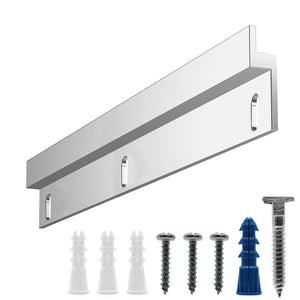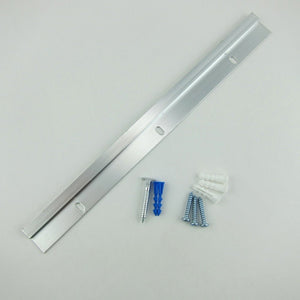Happy Thanksgiving!! We will be closed November 27th and 28th to celebrate the holiday. Orders will resume shipping December 1st and will be shipped out in the order in which they were received and should be within 1-4 business days. ****Enjoy Free Shipping on Orders Over $99 within the 48 Contiguous States!
Happy Thanksgiving!! We will be closed November 27th and 28th to celebrate the holiday. Orders will resume shipping December 1st and will be shipped out in the order in which they were received and should be within 1-4 business days. ****Enjoy Free Shipping on Orders Over $99 within the 48 Contiguous States!


S-SEC-22
Security kits are picture hanging sets with all hardware needed to hang pictures with a higher level of security. Security kits with French cleats, or frame-lock hangers, utilize cleats as the main frame hardware instead of security brackets. The cleats ensure frames are level while the T-Head security screw prevents theft and falling. Cleat security kits allow your display to achieve a clean and classy look on top of being secure.
12-inch light-duty cleat hanger set with security lock for metal frames 20-30” wide
Extruded aluminum cleat measures 12” long, 1 ⅛” wide, and 3/64” thick with ¼” wall standoff, T-Head security screw measures 1 9/16” long
Supports up to 50 lbs
Compatible with #11 profile metal frames, or most Nielsen metal frames, with a 3/8" channel
Each cleat security kit includes:
One (1) 12” cleat
One (1) T-Head security screw
Three (3) #8 screws, 1” long
Three (3) #8 plastic anchors
One (1) security screw plastic anchor
Note: Wrench sold separately
Mark the position on the wall where you want the center of the top of the frame to be. Use a pencil or small piece of tape for this.
Hold the aluminum bracket horizontally against the wall with the screw holes at the bottom and the offset facing up and away from the wall. Center the bracket side-to-side on the mark you made in step 1, with the top edge of the bracket level.
Punch or mark the position of the hole at the right-hand side of the bracket on the wall.
Drill a 3/16" dia. hole on the spot you marked. If you hit a wall stud, skip to step 6 without using the anchor.
Gently hammer one of the white plastic anchors into the hole until it is flush with the wall surface. TIP: If the plastic anchor starts to deform while hammering, re-drill the hole in step 4 using a ¼” drill bit.
Attach the bracket to the wall using one of the 1" screws. Do not tighten this screw completely yet.
Carefully level the bracket on the wall using the screw already installed as a pivot point. A lightweight torpedo level is suitable but optional for this step. Take care to position the wall bracket as level as possible.
Repeat steps 3-6 for the second hole at the left-hand side of the bracket. Depending on the length of the bracket and configuration of the screw holes, be sure at least one of the two screws is in a slotted bracket hole.
Then, tighten both screws on the bracket until they are snug, but do not over-tighten—too much force can deform the plastic anchors.
Once the bracket is fastened to the wall at both ends, hang the frame on the cleat so that the offset is seated snugly inside the back channel of the metal frame's top rail.
Check that the frame is level. Adjust as needed by removing the frame from the wall, loosening the wall bracket screws slightly, shifting the brackets up or down as needed in their slots, and retightening the screws.
Remove the frame from the wall and pencil-mark the position of the bracket on the wall at the bottom edge as a reference. Then install the remaining white plastic anchor/s and screw/s and replace the frame on the wall.
With the frame on the wall, lightly pencil-mark the wall at the center point of the frame's bottom rail where the edge touches the wall.
Remove the frame from the wall.
Measure the distance on your metal frame from the outer edge to the center of the channel. This dimension can vary with different types of metal frames.
Transfer this measurement to the wall, making a second pencil mark alongside the one in step 13. Erase the previous mark/s.
Drill a 5/16" dia. hole in the marked spot/s and gently hammer the blue T-Head screw plastic anchor/s into the drilled hole/s until it is flush with the wall.
Thread the T-Head screw into the plastic anchor until about 3/8" extends from the wall surface. Start by hand and complete using a security wrench (not included). Then, align the T-Head to a final horizontal position.
Hang the frame on the wall. The T-Head screw should fall inside the back channel of the frame's bottom rail.
From the right-hand side, slide the security wrench under the bottom edge of the frame and, without lifting the frame from the wall, engage and rotate the T-Head screw clockwise with a one-quarter turn to a vertical position. The frame is now locked to the wall.
